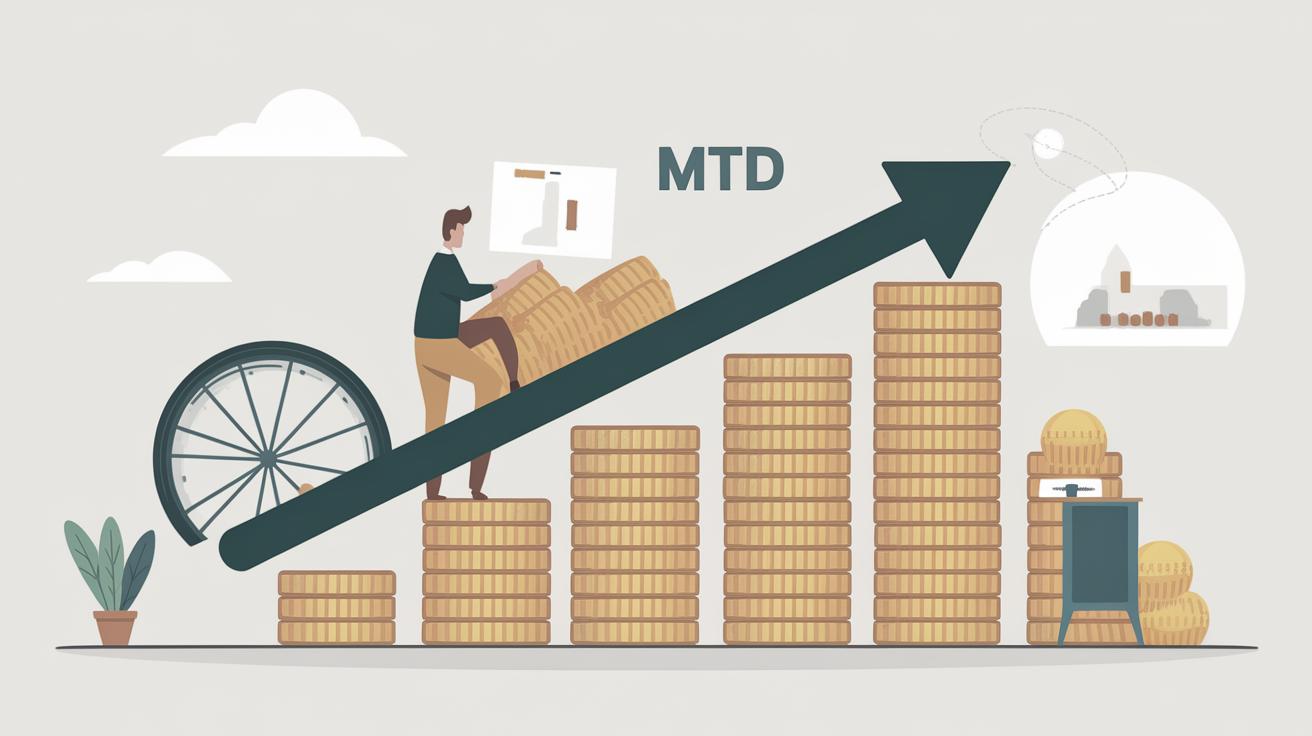The Journey of Blockchain: From Inception to Innovation
Blockchain technology, often associated with the meteoric rise of cryptocurrencies like Bitcoin, is a concept whose roots trace much further back than its 2009 public debut. This blog post takes a comprehensive look at the pivotal moments in blockchain’s evolution, from its academic origins to its various applications beyond digital currencies. We will journey through the years, spotlighting key developments from 1979 to 2023, and explore how each milestone contributed to the robust and versatile technology that underpins not just financial systems but has the potential to revolutionize industries worldwide. Ending with a glimpse into blockchain’s future, this exploration encapsulates the entire saga of a transformative technology.
Riding the back of volatile cryptocurrencies, blockchain’s trek has been raucous since 2009, but the technology’s roots are much deeper and applications much richer than Bitcoin.
Although blockchain and Bitcoin are often synonymous in public perception, their paths diverged significantly after 2009. Bitcoin’s inception as a decentralized digital currency was the first practical demonstration of blockchain’s capabilities. Amidst the speculative fervor surrounding Bitcoin, blockchain emerged as a versatile tool with potential applications across various sectors beyond finance, such as supply chain management, healthcare, and voting systems.
This evolution highlights how blockchain technology, initially a support mechanism for cryptocurrencies, has the potential to reshape the infrastructure of numerous industries. Blockchain’s promise of transparency, immutability, and decentralization invites exploration into new territories where traditional systems can be enhanced by this groundbreaking technology.
What is blockchain?
At its core, blockchain is a distributed ledger technology that allows data to be stored globally on thousands of servers while letting anyone on the network see everyone else’s entries in near real-time. This makes the information more transparent and, importantly, immutable, meaning it cannot be changed once recorded, enhancing its security.
Blockchain consists of blocks that store batches of individual transactions, with each block holding a unique cryptographic hash of the previous one, linking them in a virtual chain. This architecture ensures that once a block is part of the chain, it cannot be altered retroactively, preserving the integrity of the entire chain. Owing to these features, blockchain found its initial footing in the creation of decentralized cryptocurrencies but has since branched into various other sectors.
Blockchain for businesses: The ultimate enterprise guide
For businesses, blockchain offers a way to streamline operations and create efficiencies. By removing intermediaries and automating processes, it reduces costs and speeds up transactions. In the supply chain, blockchain can be used to track products from origin to sale, providing full transparency and helping companies streamline their logistics.
In the realm of contracts, blockchain-based smart contracts enable agreements to self-execute when conditions are met. This innovation reduces the need for intermediaries like lawyers or brokers, cutting costs and increasing speed in contract execution. Moreover, transparent and immutable record-keeping enhances accountability and reduces the risk of fraud across various industries.
Blockchain’s historical building blocks
Before delving into the specifics of blockchain’s evolution, it’s crucial to understand the foundational concepts and innovations that predated its creation. These include cryptographic advancements, peer-to-peer networking, and distributed systems, all of which set the stage for blockchain technology.
This groundwork laid by pioneering minds facilitated blockchain’s emergence as a holistic solution connecting various disciplines. By looking back, we gain a better understanding of how cumulative advancements contribute to groundbreaking innovations like blockchain.
1979
In 1979, cryptographer Ralph C. Merkle introduced the concept of Merkle trees, an ingenious data structure that allows for efficient and secure verification of content in large databases. These trees are fundamental to some cryptographic protocols and were one of the essential building blocks that made blockchain technology possible.
Merkle trees allow for the secure verification of data, a feature integral to blockchain. By ensuring the integrity of the data in each block, Merkle trees help maintain the network’s stability and security. This ensures that any changes would need consensus from multiple participants, thus preventing unauthorized alterations.
1982
In 1982, computer scientist David Chaum introduced the concept of a blockchain-like protocol in his dissertation, “Computer Systems Established, Maintained, and Trusted by Mutually Suspicious Groups.” His work focused on ensuring security, privacy, and anonymity in communication systems and laid foundational ideas for peer-to-peer networking and cryptographic security.
Although his work primarily addressed privacy concerns, the underlying ideas significantly influenced the design principles of blockchain technology, where data privacy and consensus between distributed participants are crucial features.
1991
Stuart Haber and W. Scott Stornetta, researchers working in Bell Communications, descriptively outlined the building blocks for a cryptographically secured chain of blocks in 1991. Their work primarily focused on creating a time-stamping protocol resistant to backdating, an integral function that blockchain would later fulfill.
Their methodology formed the basic idea of a digital ledger that linked records securely, using cryptographic tools. This concept changed data authentication fundamentally, giving rise to models that helped prevent tampering and assured document authenticity.
1993
In 1993, computer scientist and cryptographer Hal Finney introduced the notion of reusable proofs of work, which would later be used in the Bitcoin protocol to ensure consensus without a central authority. His innovative ideas on cryptographic protocols aimed at robust security systems sowed the seeds for blockchain’s decentralized nature.
Finney focused on securing transactions while maintaining a decentralized approach, which was later adopted by the leading cryptocurrency models to maintain transparency across networks without intermediaries. The incorporation of proof of work elevated blockchain security protocols, offering practical solutions for complex transaction ecosystems.
1997
Adam Back, a prominent computer scientist, unveiled Hashcash in 1997, an anti-spam technique that later found application in blockchain’s proof-of-work algorithm. His contribution significantly impacted Satoshi Nakamoto’s development of Bitcoin, as the proof-of-work algorithm is at the core of Bitcoin mining and blockchain security.
Hashcash offered a practical solution to mitigating spam by using computational puzzles, which emerged as a formidable strategy for maintaining blockchain’s stringent security protocols. Back’s work infused greater robustness and reliability in blockchain technology, poised for efficient network management and validation processes.
1999
By 1999, developers were increasingly integrating cryptographic security systems into networking models. Markus Jakobsson and Ari Juels introduced the concept of “proofs-of-work,” a term that took a central role in blockchain and cryptocurrency dynamics. Their work cemented the premise of decentralized validation in digital security.
This brew of decentralized verification frameworks laid down the principles for the advent of blockchain technology. Pairing cryptographic verification with digital currency viability led to more secure, measurable standards within financial transactions across distributed systems.
2000
At the turn of the millennium, Stefan Konst published the ideas surrounding cryptographic chaining, which tackled the transparency and trustability of digital ledgers. Konst’s innovations echoed the aspirations of earlier breakthroughs that aimed to create unhackable, transparent databases.
Although not directly applied in early blockchain, these ideas advanced the conceptual foundation of blockchain as an open-source platform emphasizing transparency without risking security or trust. This paved the way for blockchain’s indispensable role in today’s financial and enterprise environments.
2004
Hal Finney reemerged in 2004 with a decentralized concept called RPOW, or “Reusable Proof of Work,” which built upon the reusable concept of proof-of-work outlined earlier. Though the system itself was not a blockchain, it boasted pivotal mechanics that reinforced decentralized transaction verification.
RPOW highlighted efficiency through minimized energy utilization and streamlined transaction processing, making it a critical precursor to concepts embedded in the Bitcoin network. Finney’s advancement defined sustainable models for subsequent blockchain technology development.
2008
Blockchain’s most consequential chapter begins in 2008, with the publication of the Bitcoin white paper “Bitcoin: A Peer-to-Peer Electronic Cash System” by an anonymous person or group known as Satoshi Nakamoto. This white paper laid out the entire blueprint for Bitcoin and, implicitly, the underlying blockchain concept that would forever change the digital landscape.
This brilliant conceptualization of a decentralized currency using blockchain technology offered solutions to the double-spending problem in digital cash transactions. With transparency, security, and integrity woven into its design, 2008 marks the real-world introduction of modern blockchain technologies.
2009
In 2009, Satoshi Nakamoto mined the first block of the Bitcoin blockchain, commonly referred to as the “genesis block.” This momentous event marked not only the creation of the first blockchain-based currency but also the establishment of blockchain as a revolutionary technology.
The debut of the Bitcoin blockchain signaled the practical use of cryptographic proofs instead of trust, enabling two willing parties to transact directly without the need for a trusted third party. This year laid the groundwork for the blockchain revolution and signaled the start of its test in various real-world applications.
2010
The year 2010 further cemented Bitcoin’s significance with the infamous Bitcoin Pizza transaction, the first commercial transaction using Bitcoin, where two pizzas were purchased for 10,000 BTC by Laszlo Hanyecz. This demonstrated Bitcoin’s utility beyond a digital concept, highlighting blockchain’s role in facilitating real-world transactions.
As Bitcoin gained traction, it cast blockchain into the spotlight, prompting curiosity and innovation in decentralized technologies. The blockchain’s potential for security, transparency, and efficiency prompted explorations into new industries beyond mere currency exchange.
2011
By 2011, alternative cryptocurrencies, or altcoins, started to emerge as blockchain’s adaptable infrastructure lent itself to various digital currencies. Litecoin, introduced by former Google engineer Charlie Lee, became one of the first major altcoins, employing a different algorithm aimed to improve transaction speed.
This diversification signaled the growing acceptance and understanding of blockchain’s broader applications. Entrepreneurs and developers saw the immense potential in creating unique transactional ecosystems that blockchain technology could support, building towards a more comprehensive decentralized digital economy.
2012
In 2012, Ripple was launched, enhancing blockchain’s capabilities beyond mere currency. Ripple aimed to enable secure, instant, and nearly free global financial transactions of any size with no chargebacks, emphasizing interoperability between cryptocurrencies and conventional financial institutions.
This innovation marked blockchain’s place in the larger financial fabric and highlighted its potential to revolutionize international commerce. Ripple’s approach demonstrated blockchain’s versatility and the unprecedented possibilities it offered for industry disruption.
2013
Vitalik Buterin, a programmer and co-founder of Bitcoin Magazine, published the Ethereum white paper in 2013. He introduced Ethereum as a blockchain platform adept at facilitating smart contracts — self-executing contracts with the terms of the agreement directly written into lines of code.
Ethereum marked a significant leap in blockchain’s journey, enabling decentralized applications (dApps) and services to be built upon its platform. It expanded blockchain’s scope from a currency-specific tool to a multi-functional framework supporting an entire ecosystem of decentralized operations.
2014
The year 2014 witnessed the launch of several blockchain platforms that embraced variations from traditional blockchain models, focusing on diversified approaches like privacy or scalability. Bitcoin underwent a pivotal transition with the launch of the Bitcoin Foundation, aiming to standardize and promote Bitcoin’s acceptance globally.
Parallel to Bitcoin, other sectors began exploring blockchain’s potential, recognizing its robustness and transparency as solutions to systemic weaknesses in existing infrastructure. This exploration across diverse sectors bolstered blockchain’s image as a transformative tool beyond its financial instrument origins.
2015
In 2015, Ethereum went live, revolutionizing blockchain technology again. With its launch, Ethereum empowered developers to build and deploy smart contracts and decentralized applications. This further showcased blockchain’s transformative capabilities beyond digital currency.
Ethereum’s introduction catalyzed a wave of innovation centered around dApps, inspiring new ways to think about decentralization and community involvement within the blockchain ecosystem. It opened doors to a new era where projects could leverage automatic, interoperable interactions across the network.
2016
The remarkable success of Ethereum led to the DAO (Decentralized Autonomous Organization) concept in 2016, aimed at functioning as a venture capital fund for the crypto and blockchain space. Despite its initial failure due to a hacking incident, the DAO underscored blockchain’s potential to redefine governance and collective decision-making.
This incident highlighted the importance of security, better governance, and resilience in designing blockchain systems. It precipitated essential discussions and upgrades in blockchain design and evaluated protocols for enhanced safety mechanisms.
2017
The unparalleled growth of Bitcoin, with its price soaring to astronomical heights in 2017, brought unprecedented attention to blockchain technology. ICOs (Initial Coin Offerings) exploded in popularity, each promising new heights of decentralization and innovation.
This period of speculative mania underscored the need for regulatory frameworks while establishing blockchain as a pivotal technology with far-reaching implications in finance and beyond. The surge led to massive investments in blockchain R&D, sparking a host of new startups focused on decentralizing different facets of digital interaction.
2018
The year 2018 was marked by market corrections in cryptocurrencies but saw blockchain companies doubling down on development efforts. Industries like banking, healthcare, and supply chain management took a keen interest in blockchain solutions for transparency and efficiency.
Blockchain’s practicality became more discernible as industries adopted emerging frameworks to curtail inefficiencies and improve system protocols. PoCs (Proofs of Concept) for blockchain implementations emerged throughout the business world, laying down pathways that fostered trust, reliability, and audience expansion.
2019
In 2019, the conversation around blockchain matured as organizations began differentiating blockchain’s substance from the hype surrounding cryptocurrencies. Concepts like enterprise blockchain and decentralized finance (DeFi) gained prominence, exploring real-world applications that could disrupt various industries significantly.
The focus shifted towards substantial blockchain integration that promises to reinvent operational structures in sectors offering promising returns on investment. From logistics to legal sectors, blockchain began showcasing its adaptability in providing sustainable, secure systems.
2020
Amidst global pandemic challenges in 2020, blockchain technology found new use cases and outlets in healthcare and supply chain management. It established secure frameworks to authenticate data logging, patient privacy management, and the tracking of pharmaceutical goods.
The emphasis on transparency and integrity that came with blockchain demonstrated immense value in tackling pandemic-related issues. These adaptations provided compelling validations of blockchain’s role in ensuring robust healthcare infrastructure and more resilient supply chains.
2021
The mainstream acceptance of blockchain technology surged forward in 2021, with major institutions and corporations showing active interest and integrating blockchain solutions. The emergence of NFTs (Non-Fungible Tokens) brought blockchain into the creative and digital content domain, highlighting new digital ownership paradigms.
This year marked the transition of blockchain from experimental to essential, with global enterprises reshaping their operational strategies to align with blockchain’s promise. These changes signaled the embracement of decentralized, transparent, and secured solutions as a compatible business necessity.
2022
Blockchain matured significantly by 2022, with institutions not merely experimenting but deploying functional blockchain systems, irrevocably altering sectors focused on finance, real estate, and beyond. Hybrid models, leveraging both public and private chains allowed greater flexibility.
Key collaborations and partnerships between tech giants and blockchain startups proliferated, bolstering innovation and legislative accommodations that encouraged further experimentation and adoption. The blockchain ecosystem and its diverse capabilities began reflecting a future interlinked with mainstream digital operations.
2023
By 2023, blockchain’s influence had solidified its presence in everyday applications, from governance systems to everyday transactions. Its stability and adaptability solidified blockchain as a credible force illustrating mature use cases across every corner of digitization.
With a wide array of industries having adopted blockchain-led innovations, the cumulative transformations and synergies between blockchain and established systems have defined a new digital era. This evolution signals enduring engagements, setting a precedent telling of future technological advancements intertwined with blockchain fundamentals.
Beyond 2023
As we look beyond 2023, blockchain remains a pivotal element of technological advancement, with experts predicting further integration into global systems. Predictions suggest it will streamline artificial intelligence integration, enhance IoT applications, and drive new business models centered on decentralization.
The continued focus on security, efficiency, and transparency promises a horizon where blockchain is indispensable in a variety of applications from governance and supply chains to personal data integrity, projecting a world that can leverage its potential for comprehensive improvements to everyday life.
| Year | Key Developments |
|---|---|
| 1979 | Introduction of Merkle trees, foundational to cryptographic security. |
| 1982 | David Chaum introduces blockchain-like protocol in dissertation. |
| 1991 | Haber and Stornetta describe a cryptographically secured chain of blocks. |
| 1993 | Hal Finney contributes with the concept of reusable proofs of work. |
| 1997 | Launch of Hashcash by Adam Back, a precursor to blockchain’s proof-of-work. |
| 1999 | Proof-of-work becomes central to blockchain and cryptocurrency dynamics. |
| 2000 | Stefan Konst publishes on cryptographic chaining, enhancing transparency. |
| 2004 | Enhanced methods in decentralized verification by Hal Finney with RPOW. |
| 2008 | Satoshi Nakamoto publishes the Bitcoin white paper. |
| 2009 | Genesis block of Bitcoin blockchain is mined. |
| 2010 | First commercial Bitcoin transaction (Bitcoin Pizza event). |
| 2011 | Introduction of Litecoin as one of the first major altcoins. |
| 2012 | Launch of Ripple for global financial transactions. |
| 2013 | Vitalik Buterin publishes Ethereum white paper. |
| 2014 | Bitcoin Foundation launches to promote global Bitcoin adoption. |
| 2015 | Ethereum goes live, enabling smart contracts. |
| 2016 | The DAO, a new method of raising funds on Ethereum, despite hacking incidents. |
| 2017 | Bitcoin’s value skyrockets, popularizing ICOs. |
| 2018 | Blockchain applications expand in enterprise domains. |
| 2019 | Emergence of DeFi and enterprise blockchain applications. |
| 2020 | Blockchain’s role expands amidst pandemic in healthcare, supply chain. |
| 2021 | Mainstream adoption rises; NFTs gain popularity. |
| 2022 | Hybrid blockchain models and wider adoption across industries. |
| 2023 | Blockchain becomes entrenched in routine digital operations and governance systems. |


